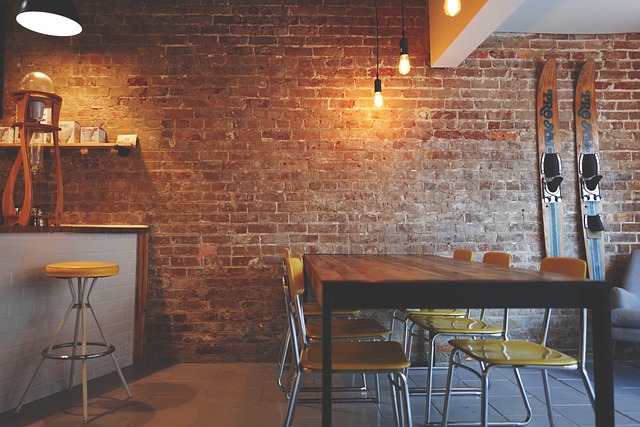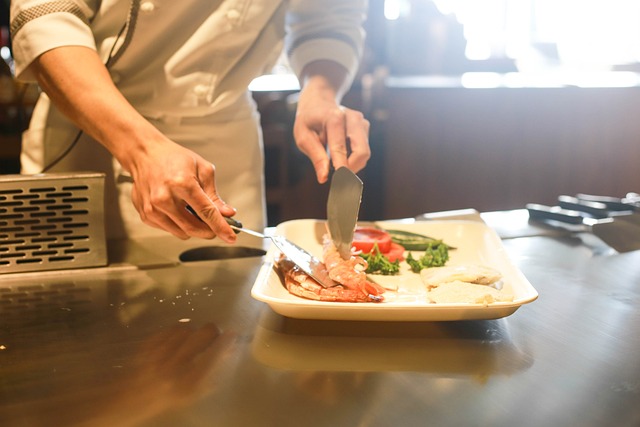A Saladette counter is a refrigerated prep station commonly found in
commercial kitchens. It provides a dedicated workspace for preparing and storing
cold food items, ensuring food safety and efficient meal assembly. Choosing the
right Saladette counter is crucial for optimizing your kitchen workflow. Here's
a breakdown of the essential factors to consider before you buy:

I. Key Factors to Consider Before Buying a Saladette
Counter
A. Functionality and Features:
1. Size and Capacity: This is a crucial
decision point. Saladette counters come in a wide range of lengths and depths,
from compact units ideal for smaller kitchens to expansive work stations suited
for high-volume food prep operations. Carefully assess your needs:
· Volume of food prep: Will you be prepping ingredients for
a small cafe or a bustling restaurant? If you anticipate large quantities,
prioritize a counter with ample workspace and well capacity.
· Number of cooks: Consider how many cooks will be using the
Saladette counter at once. A larger unit provides more working area to avoid
congestion during peak prep times.
· Available kitchen space: Measure your available kitchen
space meticulously to ensure the Saladette counter you choose fits comfortably
without creating bottlenecks or obstructing workflow.
2. Work Surface Material:
· Stainless Steel: The industry standard, stainless steel
offers exceptional durability, ease of cleaning, and resistance to corrosion.
Its neutral aesthetic blends seamlessly with most kitchen designs.
· Granite or Butcher Block: These materials add a touch of
sophistication and can complement specific kitchen design themes. However, they
may require more specialized cleaning procedures and might not be as resistant
to scratches or dents as stainless steel.
3. Temperature Control:
· Refrigerated Wells: These are ideal for storing prepped
ingredients that require consistent cold temperatures, such as meats, seafood,
or dairy products. Consider the number of wells you need and their configuration
(square, rectangular, round) to optimize space usage based on the types of food
you typically prepare.
· Refrigerated Drawers: Drawers offer a deeper storage
option for bulky items or ingredients that need to be stacked. They're also
great for organizing and keeping prep areas clutter-free.
· Combination Units: Many Saladette counters offer a
combination of refrigerated wells and drawers, providing flexibility for storing
a wider variety of ingredients at their optimal temperatures.
4. Well Depth and Number:
· Well Depth: The depth of the wells directly impacts the
types of food you can store efficiently. Shallow wells are perfect for holding
garnishes, toppings, or smaller portioned ingredients like cheeses or sliced
vegetables. Deeper wells are ideal for accommodating larger ingredients like
whole cuts of meat, poultry, or large containers of prepped vegetables.
· Number of Wells: This depends on the volume and variety
of ingredients you typically use. Having enough wells ensures you can keep
everything organized and readily accessible during prep time.
5. Horsepower: Horsepower directly affects the cooling
efficiency of your Saladette counter. Higher horsepower translates to faster
cooling times and better temperature control, especially important for
high-volume kitchens that demand consistent chilling of large quantities of
food. For smaller kitchens with lower prep volumes, a lower horsepower unit
might be sufficient.
B. Additional Considerations:
1. Drainage System: Saladette counters come with either
floor drain or self-contained evaporation systems. Floor drains require plumbing
installation, while self-contained models offer more flexibility in placement
but may require emptying a collection tray.
2. Casters or Fixed Base: Consider if you need the mobility
that casters provide for cleaning or rearranging your kitchen layout. Fixed base
models offer a more permanent solution.
3. Warranty: A good warranty protects your investment and ensures repairs if
needed in the future.
4. Brand Reputation: Research different Saladette counter
brands and their reputation for quality, customer service, and durability.
5. Compliance Standards: Ensure the Saladette counter you
choose meets all relevant health and safety regulations for your area.

II. Beyond the Basic Features
Once you've considered the essential functionalities, there are additional
features that can enhance your Saladette counter's usability:
Additional Features: Look for features like sneeze guards to
protect food during prep, built-in cutting board areas for added convenience, or
condiment dispensers to streamline food assembly.
Aesthetic Considerations: Saladette counters can be a focal
point in your kitchen. Choose a finish that complements your overall design,
whether it's stainless steel for a modern look or granite for a more classic
touch.
Ease of Cleaning: Smooth surfaces and removable parts make
cleaning your Saladette counter a breeze, ensuring optimal hygiene in your
kitchen.

III. Conclusion
Choosing the right Saladette counter requires careful consideration of your
specific needs and kitchen layout. By focusing on functionality, additional
features, aesthetics, and ease of cleaning, you can ensure you select a unit
that optimizes your food prep workflow and complements your commercial kitchen
environment.
Consult with a restaurant equipment suppliers. They can assess your needs and
recommend suitable Saladette counter options based on your space and budget. Smad Saladette counters vary in price depending on size and features. By
following these steps, you'll be well-equipped to choose the perfect Saladette
counter for your commercial kitchen.


